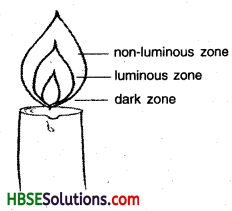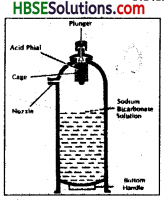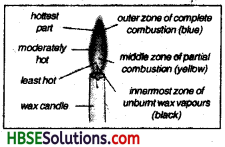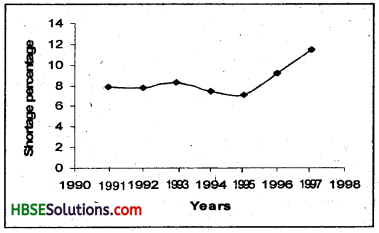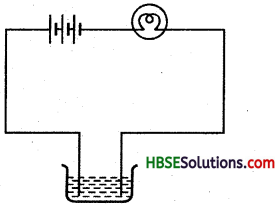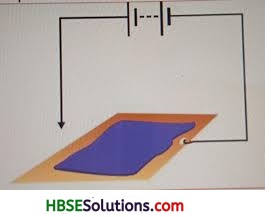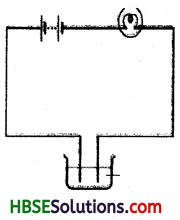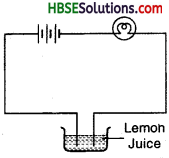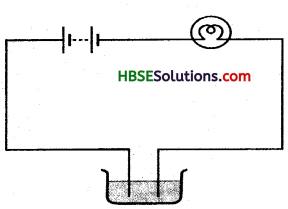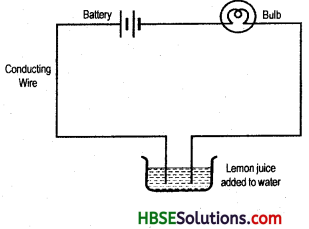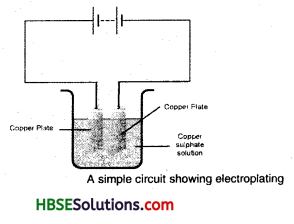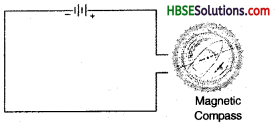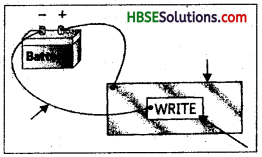Haryana State Board HBSE 8th Class Science Solutions Chapter 13 Sound Textbook Exercise Questions and Answers.
Haryana Board 8th Class Science Solutions Chapter 13 Sound
HBSE 8th Class Science Sound Textbook Questions and Answers
Question 1.
Choose the correct answer: Sound can travel through:
(a) gases only
(b) solids only
(c) liquids only
(d) solids, liquids and gases.
Answer:
(d) solids, liquids and gases.
Question 2.
Voice of which of the following is likely to have minimum frequency?
(a) Baby girl
(b) Baby boy
(c) A man
(d) A woman
Answer:
(a) Baby girl.
Question 3.
In the following statements, tick ‘T’ against those which are true and ‘F’ against those which are false :
(a) Sound cannot travel in vacuum. (T / F)
(b) The number of oscillations per second of a vibrating object is called its time period. (T / F)
(c) If the amplitude of vibration is large, sound is feeble. (T / F)
(d) For human ears, the audible range is 20 Hz to 20,000 Hz. (T / F)
(e) The lower the frequency of vibration, the higher is the pitch. (T / F)
(f) Unwanted or unpleasant sound is termed as music. (T / F)
(g) Noise pollution may cause partial hearing impairment. (T / F)
Answer:
(a) True
(b) False
(c) False
(d) True
(e) False
(f) True
(g) True.

Question 4.
Fill in the blanks with suitable words :
(a) Time taken by an object to complete one oscillation is called ________.
(b) Loudness is determined by the ________ of vibration.
(c) The unit of frequency is ________.
(d) Unwanted sound is called ________.
(e) Shrillness of a sound is determined by the ________ of vibration.
Answer:
(a) time period
(b) amplitude
(c) hertz
(d) noise
(e) frequency.
Question 5.
A pendulum oscillates 40 times in 4 seconds. Find its time period and frequency.
Answer:
Time taken by pendulum to complete 40 oscillations = 4 seconds
Time taken by pendulum
to complete 1 oscillation = \(\frac { 4 }{ 40 }\)
= \(\frac { 1 }{ 10 }\)
= 0.1 sec.
Time period of pendulum = 0.1 sec.
Frequency of pendulum
= \(\frac { 40 }{ 4 }\) \(\frac { oscillation }{ time }\)
= 10 Hz.
Question 6.
The sound from a mosquito is produced when it vibrates its wings at an average rate of 500 vibrations per second. What is the time period of the vibration?
Answer:
Time taken to complete
500 vibrations = 1 second
Time taken to complete
1 vibration = \(\frac { 1 }{ 500 }\) = 0.002
Time period of vibration = 0.002 second.
Question 7.
Identify the part which vibrates to produce sound in the following instruments:
(a) Dholak
(b) Sitar
(c) Flute.
Answer:
(a) Stretched membrane
(b) Strings
(c) air column.
Question 8.
What is the difference between noise and music? Can music become noise sometimes?
Answer:
Noise is the sound which is unpleasant for our ears. Excessive or unwanted sounds are called noise. Music is the sound which is pleasant for our ears and has soothing effect. Music sometimes can become noise when it crosses the bearable range of sound for our ears.
Question 9.
List sources of noise pollution in your surroundings.
Answer:
There are various sources which cause sound pollution in our surroundings like : Honking of horns, loud sounds of machines in factories, loud musics in parties and marriages, loud sound of T. V. or radio, loud sounds of domestic electronic appliances like mixer grinder etc. are some sources of noise in our environment.

Question 10.
Explain in what way noise pollution is harmful to humans?
Answer:
- Noise pollution can cause temporary or permanent deafening.
- It can cause many health related problems like high blood pressure
- It can cause mental illness due to lack of sleep.
Question 11.
Your parents are going to buy a house. They have been offered one on the roadside and another three lanes away from the roadside. Which house would you suggest your parents should buy? Explain your answer.
Answer:
I would suggest my parents to buy house three lanes away from the roadside because area away from the roadside have less traffic and thus less noise pollution. This would safe guard our health and peace of mind.
Question 12.
Sketch larynx and explain its function in your own words.
Answer:
Larynx is also called the voice box. As the name suggests, it causes (sound) voice in humans. It has vocal cords, which have air column vibrating in them, which cause sound in humans.
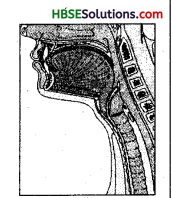
Question 13.
Lightening and thunder take place in the sky at the same time and at the same distance from us. Lightening is seen earlier and thunder is heard later. Can you explain?
Answer:
Lightening and thundering take place simultaneously but we see light earlier than thunder because light travels faster than sound, so it reaches us before the sound does.
Extended Learning – Activities and Projects
Question 1.
Visit the music room of your school. You may also visit musicians in your locality. Make a list of musical instruments. Note down the parts of these instruments that vibrate to produce sound.
Answer:
For self attempt.
Question 2.
If you play a musical instrument, bring it to the class and demostrate how you play it.
Answer:
For self attempt.
Question 3.
Prepare a list of famous Indian musicians and the instruments they play.
Answer:
For self attempt.
Question 4.
Take a long thread. Place your hands over your ears and get some one to place this thread round your head and hands. Ask her to make the thread taut and hold its ends in the hand. Now ask her to draw her finger and thumb tightly along the thread (in figure). Can you hear a rolling sound like that of a thunder ? Now repeat the activity while another friend stands near both of you. Can he hear any sound.
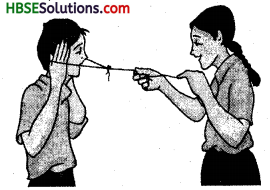
Answer:
For self attempt.
Question 5.
Make two toy telephones. Use them as shown in Fig. Make sure that the two srtings are taut and touch each other. Let one of you speak. Can the remaining three persons hear? See how many more friends you can engage in this way. Explain your observations.

Answer:
For self attempt.
Question 6.
Identify the sources of noise pollution in your locality. Discuss with your parents, Mends wad neighbours. Suggest how to control noise pollution. Prepare a brief report and present it in the class.
You can read more on the related topics on the following websites:
→ www.physicsclassroom .com/Class/sound/soundtoc.html
→ health.howstuffworks.com/hearing.htm
→ www.jaltarang.com for jaltarang
→ www.tempro/com/articles/hearing.html
→ www.cartage.org.lb/en/themes/sciences/ physics/mainpage.htm
Answer:
For self attempt
HBSE 7th Class Science Sound Important Questions and Answers
Very Short Answer Type Questions
Question 1.
What produces sound?
Answer:
Vibrations in body produce sound.
Question 2.
Can sound be produced from a body which does not vibrate?
Answer:
No.
Question 3.
Why can’t we see the vibrations in most of the cases when sound is produced?
Answer:
Their amplitude is very small.
Question 4.
Name any wind musical instrument.
Answer:
Flute.
Question 5.
What is the sound producing organ in humans called?
Answer:
Larynx.

Question 6.
What is another name for larynx?
Answer:
Voice box.
Question 7.
What are the two cords stretched across the voice box called?
Answer:
Vocal cords.
Question 8.
What vibrates in larynx to produce sound?
Answer:
Vocal cords.
Question 9.
What decides the type of voice in human?
Answer:
Tightness of vocal cords.
Question 10.
How much long the vocal cords are in men?
Answer:
20 mm.
Question 11.
What is the length of vocal cords in women?
Answer:
15 mm.
Question 12.
Through which medium can sound travel?
Answer:
Solids, liquid and gaseous medium.
Question 13.
Can sound travel through vacuum?
Answer:
No.
Question 14.
Which organs in human receive sound waves? .
Answer:
Ears.
Question 15.
What is the outer stretched part of the ear called?
Answer:
Ear drum.
Question 16.
What vibrates the ear drum?
Answer:
Sound vibrations.
Question 17.
What is the to and fro motion of objects called?
Answer:
Oscillatory motion.

Question 18.
What is the frequency of oscillation?
Answer:
Number of oscillations per second is called frequency of oscillation.
Question 19.
What is the unit of frequency?
Answer:
Hertz (Hz).
Question 20.
What does a frequency of 1 Hz means?
Answer:
One oscillation in one second.
Question 21.
What are the two important properties of a sound?
Answer:
Amplitude and frequency.
Question 22.
What is the maximum distance travelled by a vibrating body on either side of its mean position called?
Answer:
Amplitude.
Question 23.
What is the time taken to complete one oscillation called?
Answer:
Time period.
Question 24.
How does amplitude effect the loudness of vibration?
Answer:
Higher the amplitude, louder is the voice.
Question 25.
Why the sound of a baby is feeble?
Answer:
Because its amplitude is small
Question 26.
What controls the shrillness of a sound?
Answer:
Frequency.
Question 27.
What is the range of audible sound for human ear?
Answer:
From 20 to 20,000 Hz.
Question 28.
What are the sounds above 20,000 ‘ Hz called?
Answer:
Ultrasound.
Question 29.
Name any use of ultrasound?
Answer:
Ultrasound is used to detect many medical problems in human.
Question 30.
What is the unpleasant and unwanted sound called?
Answer:
Noise.
Question 31.
What are the pleasant and soothing sounds called?
Answer:
Music.
Question 32.
What is the unit of loudness?
Answer:
Decibel (dB).

Question 33.
What is the loudness of a normal conversation?
Answer:
60 dB.
Question 34.
Name any ill effect of noise pollution.
Answer:
It can cause temporary deafness.
Question 35.
Write any one measure to control noise pollution.
Answer:
Planting trees along roadsides.
Short Answer Type Questions
Question 1.
How is sound produced?
Answer:
Sound is produced by the vibrating bodies. When a body vibrates it produces sound.
Question 2.
What is the importance of sound in our life?
Answer:
Our life depends on sound for every action. Sound enables us to communicate with each other. Without sound nobody would know what other communicate or wants to express.
Question 3.
What are the musical instruments?
Answer:
Musical instruments are the devices which produce various sounds which are pleasant for our ears and produce soothing effects. The sound produced by these instruments is called music.
Question 4.
How do the musical instruments produce sound?
Answer:
Musical instruments have strings the stretched membranes attached or fixed on them . Some instruments have slits to let air pass through them, the strings are plucked and membranes are struck to produce sound. On plucking or striking they start vibrating, and the whole instrument starts vibrating with them, which produces the music.
Question 5.
Describe the organ in human that produces sound.
Answer:
In humans the sound producing organ is the voice box. It is also called the larynx. In larynx there are two vocal cords stretched across, leaving a slit for the air to pass through them.
Question 6.
How does the larynx produce sound?
Answer:
Larynx has two vocal cords stretched across it. They are stretched in a way that they leave a slit for passage of air. When air is pumped in slit by the lungs, the vocal cords start vibrating, thus producing the sound.
Question 7.
What distinguishes the sounds produced by different human beings from each other?
Answer:
Vocal cords in humans are the sound producing parts. When they are vibrated they produce sound. They are held by the muscles and the tightness with which they are held determines the quality of sound. The length of the vocal cords also determines the quality of voice.

Question 8.
How is the sound propagated?
Answer:
The sound reaches from one source to another through various mediums. It always needs a medium to travel, it cannot propagate through vacuum. Sound travels through air, solid and liquid.
Question 9.
How is it possible for whales and dolphins to communicate in water?
Answer:
Whales and dolphins live under water. They produce sound to communicate with each other. As sound can travels through air, solid and liquid-all the mediums, it is travelled from one source to another in water too, so dolphins and whales can communicate.
Question 10.
How do human hear the sounds?
Answer:
Humans hear various sounds through ears. Ears have a stretched structure called eardrum. When ears receive sound, it enters down the earcanal and reach eardrum. Vibrations of sound vibrates the eardrum and it sends vibrations to inner ear from which vibrations are sent to brain for interpretation of sound.
Question 11.
Why is it advised, not to put a sharp or pointed thing in our ear?
Answer:
It is advised not to put sharp or pointed things in the ear because it can damage the eardrum. Eardrum is a stretched membrane which is delicate. If the sharp or pointed thing would touch the eardrum, it would damage the eardrum and cause deafness.
Question 12.
What is oscillatory motion?
Answer:
The to and fro motion of the object is called vibration. This motion is the movement in both direction from its mean position- This motion in either side of the object from its mean position is called the oscillatory motion.

Question 13.
What is frequency of a motion?
Answer:
The number of to and for movement or number of oscillations per second is called the frequency of a motion. Frequency is expressed in Hertz. It is symbolized as Hz.
Question 14.
How does frequency effect the quality of sound?
Answer:
The frequency determines the shrillness of the sound. Shrillness is also called the pitch of sound. The pitch of the sound is higher if it has high frequency and the pitch is low if the frequency is less.
Question 15.
What controls the quality of voice in humans?
Answer:
Amplitude and frequency of vibrations control voice in human beings. If amplitude is high the loudness of sound will also be high, if frequency is high the shrillness or pitch will be high in voice.
Question 16.
Describe the properties of voice in men.
Answer:
Men have high amplitude of vibrations so their voice is loud and they have low frequency so-they have less shrillness in their voice.

Question 17.
Describe the properties of voice in women.
Answer:
Women have high frequency of sound waves, so they have high pitched voice it means they have high shrillness in their voice. On the other hand they have low amplitude so they have less loudness in their voice.
Question 18.
Describe the audible range of fequencies for human beings.
Answer:
Human beings cannot hear sounds below 20 Hz that means sounds with less than 20 vibrations per second cannot be heard by human beings. On the other hand sounds with frequency more than 20 KHZ also cannot be heard by human beings. 20 KHz means 20,000 vibrations per second. Therefore, roughly the audible range of sounds for human beings vary between 20 Hz to 20 KHz.
Question 19.
What are ultrasounds? How are they useful to us?
Answer:
Sounds with frequency of above than 20 KHz are called ultrasound. Ultrasounds cannot be heard by human beings, but they are very useful for human beings. Ultrasounds are used in field of medicine to detect the disorders inside the body of human beings. They are also useful in industries. They are used to detect the flaws and cracks in metallic structures.
Question 20.
What is noise?
Answer:
Noise is the unwanted and unpleasant sounds reaching our ears. They cause disturbance and are harmful. Noise is the sound which crosses the limit of audible loudness for us. Normally sounds at 80 dB of loudness becomes painful to bear and is called noise.
Question 21.
Give any five sources of noise in your surroundings.
Answer:
Five sources of noise in our environment are :
- Noise made by traffic.
- Noise created by electrical appliances used at home like coolers, mixer grinder etc.
- Loud sounds of T.V., Radio etc.
- Noise created by loud music in marriages and religious functions.
- Noise created by construction works in neighbourhood.
Question 22.
What do you mean by hearing impairment? How is it caused?
Answer:
Hearing impairment means disability to hear. It is caused by diseases of ear, injury of ear or due to degeneration of hearing mechanism with growing age. Hearing impairment can be overcome by using hearing aids if impairment is not permanent.
Question 23.
How can hearing impairment be overcome or avoided?
Answer:
Hearing impairment can be avoided by avoiding noise or avoiding the usage of sharp of pointed objects inside ear, We should avoid any ear injury. In case of hearing impairment which is temporary hearing aids help in overcoming it or using other aids like sign language etc.
Question 24.
What is noise pollution?
Answer:
Presence of excessive or unwanted sounds in the environment, which cause discomfort for us is called noise pollution. Excessive sounds are produced by honking of horns, loud speakers, crackers, machines etc.
Question 25.
How can noise pollution be controlled?
Answer:
Noise pollution can be controlled by controlling their sources. Blowing of horns should be avoided in residential areas, near schools or hospitals. Using loudspeakers etc. should also be avoided in these areas. T.V., radio etc should be played at low volume. Trees should be planted along the roadside to create a buffer zone to absorb excessive sounds on roads.
Long Answer Type Questions
Question 1.
How is sound produced? How does it travel from one place to another?
Answer:
Sound is produced by the vibrations of the body. Only vibrating bodies produce sound. Those bodies which produce vibrations produce sound but when they stop vibrating they also stop producing sound.
 Sound reaches from one source to another. It travels from one point to another through some medium. Sound waves can travel through air, liquid and even through solids. What we hear one another, that sound travels through air medium. But we can bear some body talking in next room too, that means sound waves have crossed wall to reach us. Dolphins and whales communicate in water.
Sound reaches from one source to another. It travels from one point to another through some medium. Sound waves can travel through air, liquid and even through solids. What we hear one another, that sound travels through air medium. But we can bear some body talking in next room too, that means sound waves have crossed wall to reach us. Dolphins and whales communicate in water.

Question 2.
Explain hew many types of musical instruments are there? Hew die they make sound?
Answer:
Musical instruments are differentiated on the basis of their vibrating parts, Some musical instruments have sretched membranes Which produce vibrations to make sound. Second type of musical instruments have stretched strings, which vibrate to produce sound. In third v type of instruments the wind column is used to ’ produce sound.
Instruments like hands, drums, mridangam etc, have stretched leather membrane which is struck with hands or stick to produce sounds. In instruments like guitar, sitar, veena, violin etc,, strings are struck with fingers or rubber with other instruments produce musical sounds. Instruments like mouth-organ, sehnai, flute etc, use air column to produce sounds.
Question 3.
What is nuisa? Haw is noise pollution created?
Answer:
Noise is the unwanted and unpleasant sounds around us in our environment. When these noises become huge, it creates noise pollution. Different, loud and shrill sounds discharged in environment cause noise pollution. Honking horns of vehicles on road, loud music of T-Vs and Radios, loud music in marriages and parties, noise of machines in factories, domestic electrical appliances like mixer grinder, construction work in neighbourhood, etc. are the ‘ various sources of noise polluiton in our environment.
Question 4.
What are the ill-effects of noise pollution? How can we control noise pollution?
Answer:
Noise pollution has many bad effects on our body and health. Our health and mental peace are adversely affected by noise pollution. Noise pollution becomes the root cause of many mental disorders like anxiety, depression etc. Besides mental disorders, physical disorders like hypertension, skin diseases, lack of sleep etc. are also caused by noise pollution. It is more harmfid for students and sick people.
For controlling noise pollution, honking of horns from vehicles should he banned near residential areas, schools and hospitals. T.Vs. and Radios should be played at low volume. Loudspeakers should not be allowed during sleeping hours. Trees and plants should be extensively planted along the road sides to create a buffer zone. Trees absorb noise and help in controlling noise pollution.
Sound Class 8 HBSE Notes
1. We hear different sounds in our daily life.
2. Sound is produced by the vibrating bodies. Only vibration can produce sound. Vibrations are to and fro movements of any object and this to and fro movements produce different sounds we have.
3. When the vibrations start, we hear sound, but when vibrations stop, the sound is not heard anymore.
4. Different musical instruments produce sound only due to the vibrations made by them, when they are beaten or plucked by us.
5. It is not only the vibrations of the strings or the stretched membranes of the musical instruments that produce sound, but it is the vibration of the whole instruments that produce sound.
6. In human beings it is the vibrations of the voice box or the larynx that causes the sound. Air passing through the vocal cords attached to larynx cause vibrations of the vocal cords, which enables us to produce sound.
7. It is the tightness of the vocal cords that make sounds different from each other in different human beings. The length of the vocal cords are different in men, women and children, so their voice is also different from each other.
8. Sound cannot pass from one source to another in vacuum. Sound needs medium to travel. Air, liquid, solid are the medium through which sound can travel from one source to another.
9. In human beings sound is produced by voice box, and received by hearing organs-ears. Receiving sound is called hearing. Our ear is so designed that it receives the vibrations and interpret it as sound.
10. The maximum distance a vibrating body travels from its means position is called amplitude of vibration.
11. The time taken to complete one oscillation (to and fro movement) is called the time period.
12. The number of oscillation per second is called the frequency of vibration. Frequency is expressed in Hertz (Hz).
13. Higher the frequency of vibration, higher is the pitch or shrilners of the sound.
14. High amplitude of vibration produces loud sound.
15. Unpleasant or unwanted sounds are called noises.
![]()
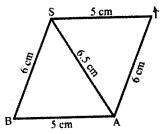
![]()
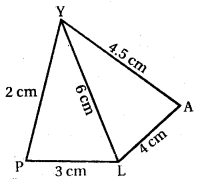
![]() , अत: ∆PLY की रचना सम्भव नहीं है। अतः वह रचना नहीं कर पाया।
, अत: ∆PLY की रचना सम्भव नहीं है। अतः वह रचना नहीं कर पाया।![]()
![]()
![]()
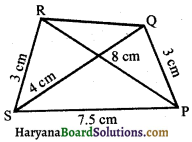
![]()
![]()
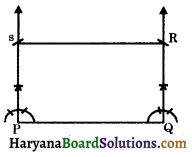
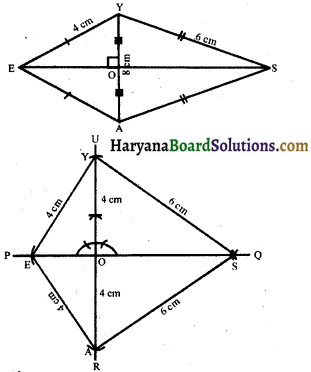




























 = \(\frac{5}{8}\)
= \(\frac{5}{8}\)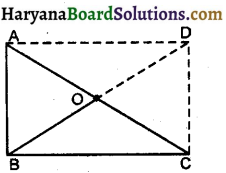
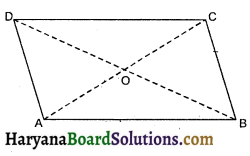


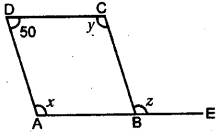
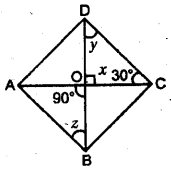
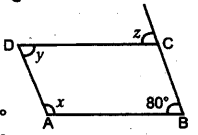
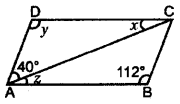

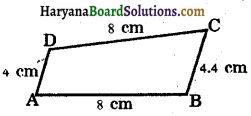
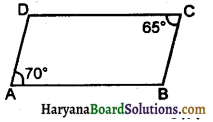
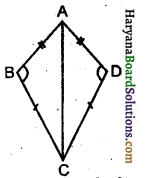
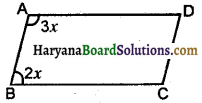
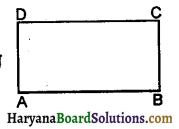

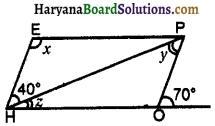

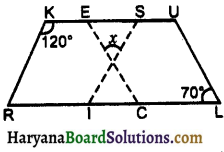
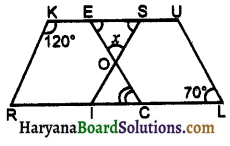

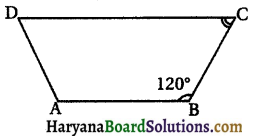

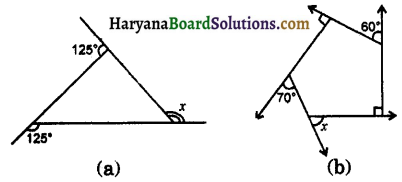

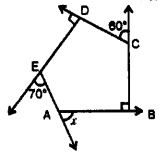
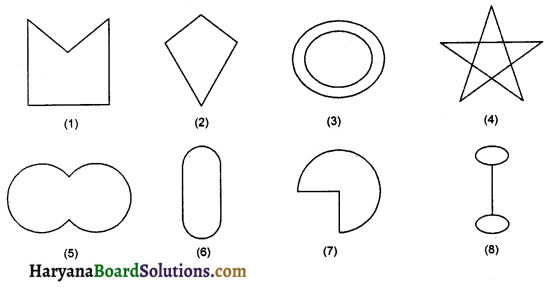




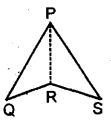
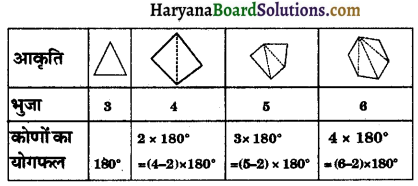
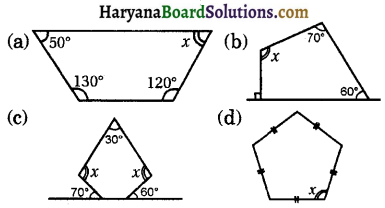

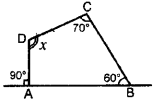
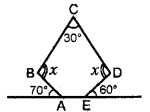
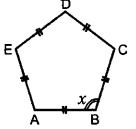
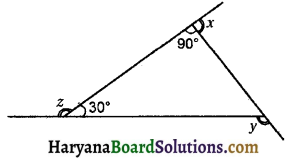
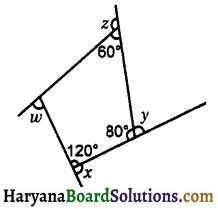




 Sound reaches from one source to another. It travels from one point to another through some medium. Sound waves can travel through air, liquid and even through solids. What we hear one another, that sound travels through air medium. But we can bear some body talking in next room too, that means sound waves have crossed wall to reach us. Dolphins and whales communicate in water.
Sound reaches from one source to another. It travels from one point to another through some medium. Sound waves can travel through air, liquid and even through solids. What we hear one another, that sound travels through air medium. But we can bear some body talking in next room too, that means sound waves have crossed wall to reach us. Dolphins and whales communicate in water.